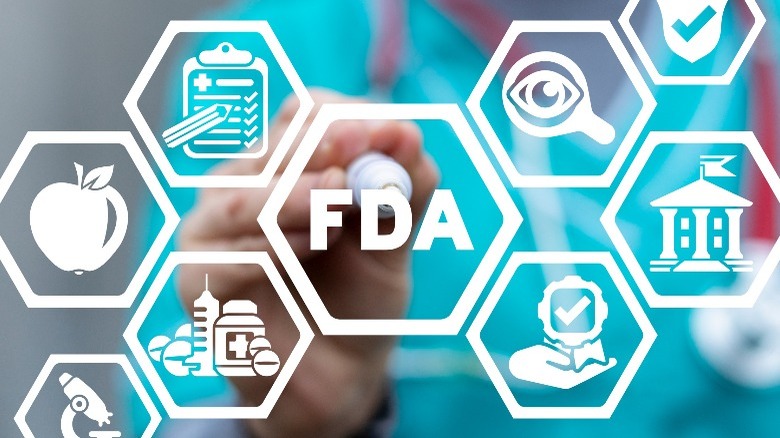Does Your Favorite Cereal Qualify As 'Healthy' Under The FDA's New Guidelines?
Every five years the United States Department of Agriculture and the United States Department of Health and Human Services release the Dietary Guidelines for Americans. The current version (2020-2025) dons the slogan "Make Every Bite Count." The guidelines focus on the connections between diet and chronic diseases, dietary patterns, and how healthy dietary patterns evolve as you age. Two of the most important aspects are what foods are essential to a healthy diet, and which foods should be avoided in excess.
Fruits, vegetables, and dairy are considered parts of a healthy American diet. On the other hand, added sugars, saturated fats, and sodium in excess constitute some of the unhealthy aspects of the American diet (Dietary Guidelines for American 2020-2025). It may come as a surprise to learn that over 80% of Americans do not consume enough dairy, fruits, and veggies, according to the United States Food and Drug Administration (FDA).
You might wonder why there's such a large gap between the consumption of healthy and unhealthy foods. One potential factor is what the FDA calls the "healthy" label, which is the ability for a given food to claim and advertise that it is "healthy" on the product packaging. For example, certain foods like select cereals currently can have the "healthy" label while other foods like salmon (due to its high fat content) cannot, via Federal Register. Now, the FDA is proposing some changes to these rules, and your favorite cereal may no longer be able to claim its once "healthy" status.
Seven cereals that no longer qualify as healthy
Cereal consumption is pervasive in America. It is estimated that Americans consume some 2.7 billion boxes each year (via Zippia). Cheerios is America's brand of choice, but others are also celebrated. In fact, November 15 is National Raisin Bran Cereal Day, reports National Today. But if health is America's priority, now it is time to reconsider which ones we're pouring into our bowls.
According to a new proposition by the FDA, in order for a cereal to qualify for and use the "healthy" label, it would need to have ¾ ounces of whole grains while also not exceeding 1 gram of saturated fat, 2.5 grams of added sugars, and 230 milligrams of sodium.
As it turns out, Raisin Bran, Honey Nut Cheerios, Honey Bunches of Oats (Honey Roasted) Frosted Mini Wheats, and Life can no longer use the healthy label due to how many grams of sugar they contain, reports WebMD. Corn Flakes and Special K also no longer qualify under the criteria due to both the added sugar and sodium content. In addition to providing more information for the consumer, the FDA suggests that these new rules may encourage food manufacturers to create products that meet the "healthy" standards (via FDA).


